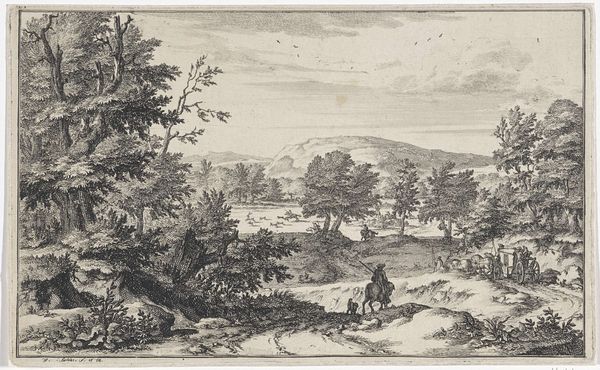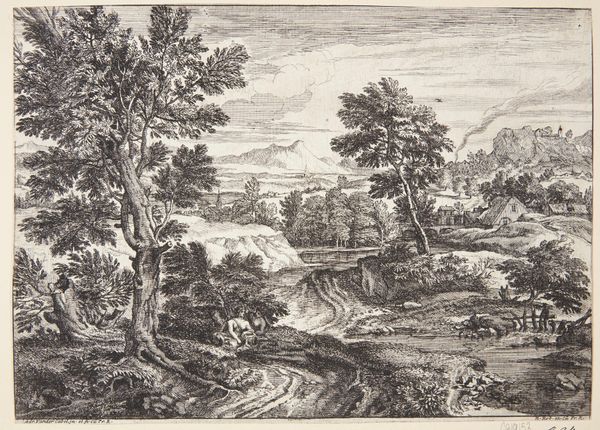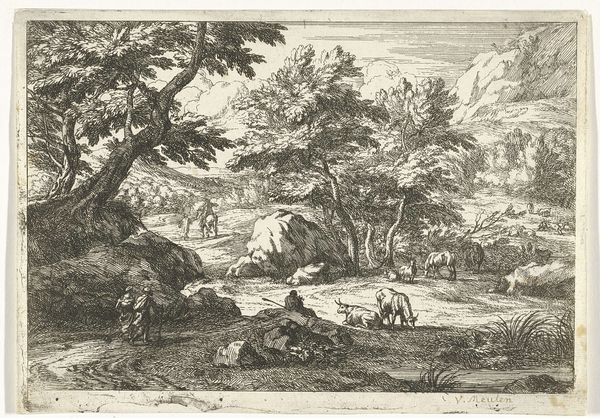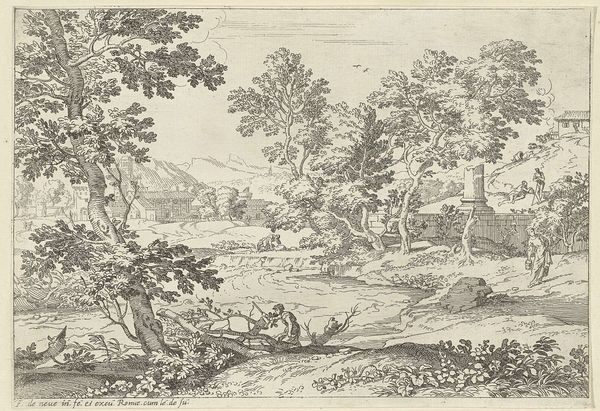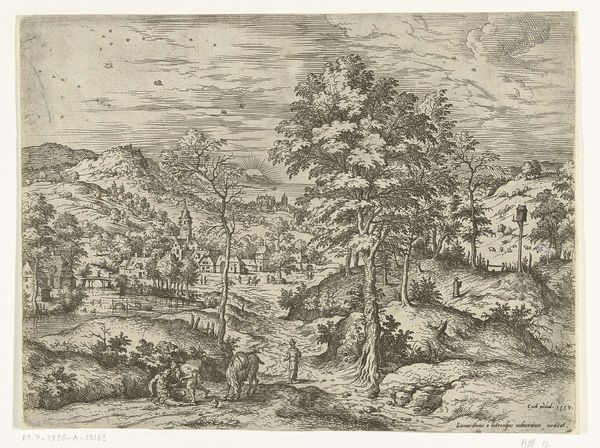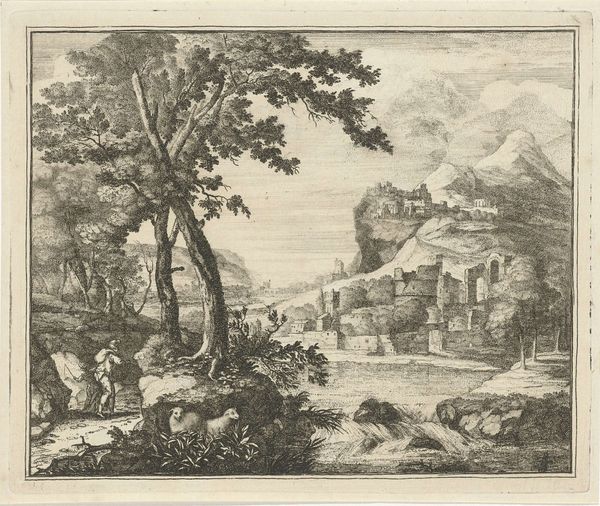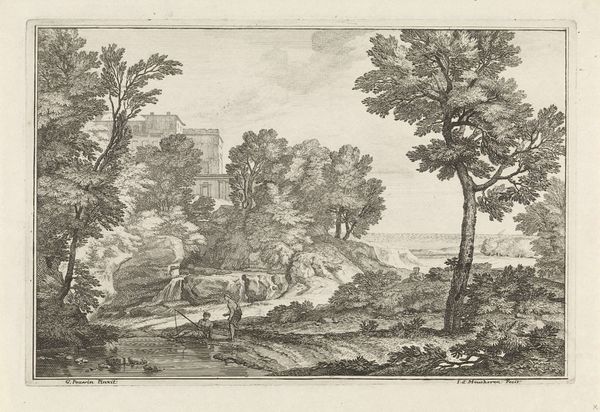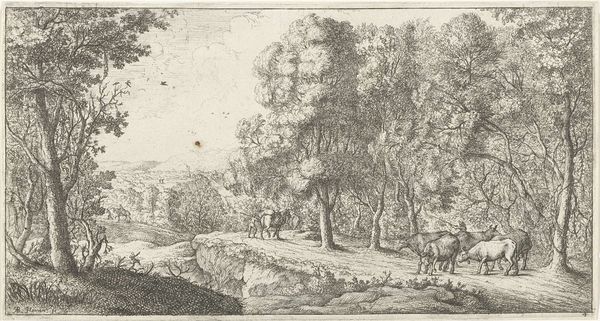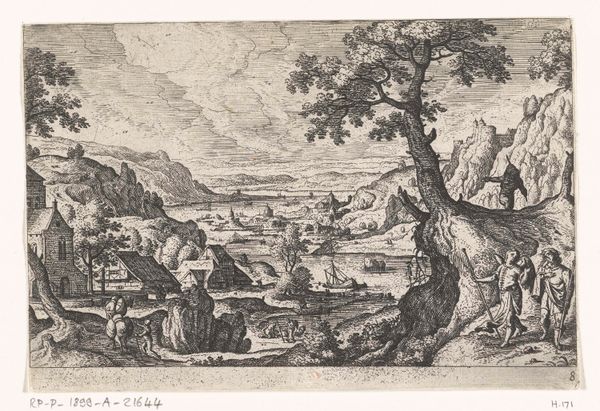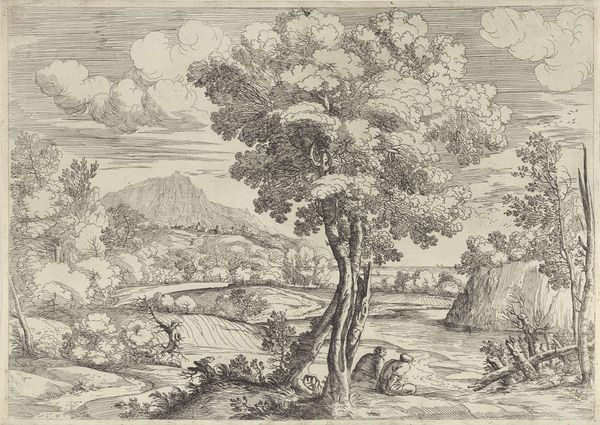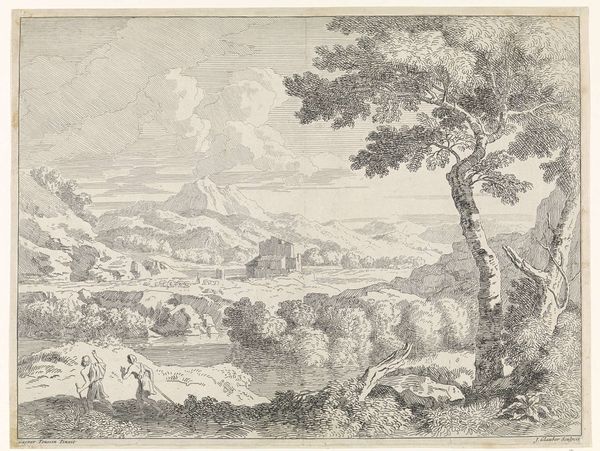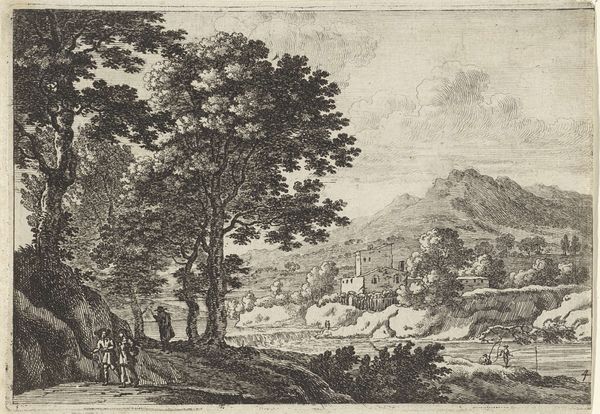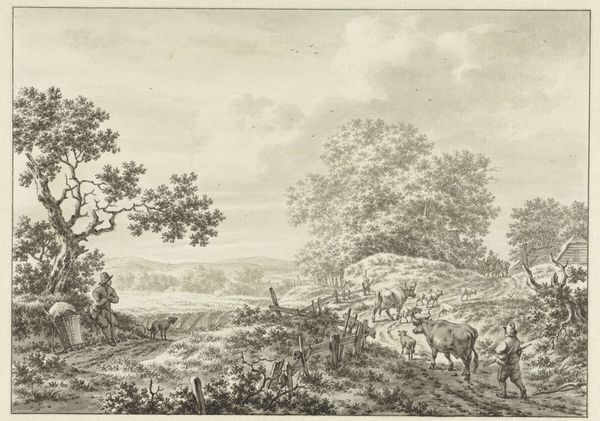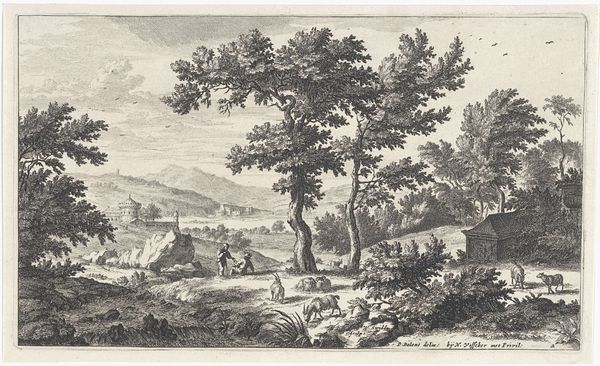
drawing, paper, ink, pen
#
pen and ink
#
drawing
#
pen drawing
#
dutch-golden-age
#
landscape
#
paper
#
ink
#
pen
#
genre-painting
Dimensions: height 142 mm, width 238 mm
Copyright: Rijks Museum: Open Domain
Willem Swidde created this landscape scene with a man and two donkeys using etching, a printmaking technique. The stark contrast from the black lines against the white paper creates an aesthetic that's both delicate and impactful. Swidde likely used a metal plate, coated with a waxy substance, to then draw his composition. The plate would then have been immersed in acid, which bites into the metal, leaving behind incised lines. The image depicts rural life; it shows a person travelling with their donkeys across a landscape. It is intriguing that Swidde chose printmaking to capture this scene. The choice implies that he sought to democratize art. Printmaking allowed for the reproduction of images, making them accessible to a wider audience beyond the wealthy elite who were typically the sole consumers of paintings. So, considering the material and making of this etching allows us to understand the cultural and social implications of this landscape scene. It’s a reminder that art is not just about the final image, but also about the processes, labor, and context that shape its creation and reception.
Comments
No comments
Be the first to comment and join the conversation on the ultimate creative platform.
